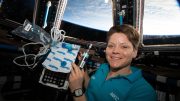
Researchers from the German Cancer Research Center found that children’s upper respiratory immune system is more proactive and responsive against SARS-CoV-2 infection than adults. This difference is attributed to the nasal mucosa of healthy children being in a constant state of “high alert” with a higher density of immune cells and increased production of pro-inflammatory cytokines. This heightened defense mechanism in children might be a natural protective response against respiratory infections.
Why are severe courses of SARS-CoV-2 infection much less common in children and adolescents than in adults? Scientists at the German Cancer Research Center have now discovered that the immune system in the upper respiratory tract is much more alert and active in children before infection than in adults and is, therefore, better equipped to fight the virus.
Many risk factors for a severe course of infection with SARS-CoV-2 are known, including high blood pressure, diabetes, obesity, or preexisting heart disease. But the clearest and most striking risk factor for a severe course is age.
During the COVID-19 pandemic, less than 0.001 percent of infected schoolchildren died from the infection. With age, the mortality rate increased almost exponentially, reaching over 10 percent in the very aged. Although initial viral loads do not differ significantly, children and adolescents have fewer symptoms and a shorter duration of illness than adults and especially the elderly.
Children’s Active Nasal Mucosa Defense
An important step toward understanding the causes of this remarkable resistance of children to severe COVID-19 disease was taken by researchers from the Berlin Institute of Health at the Charité (BIH) in Berlin and the German Cancer Research Center (Deutsches Krebsforschungszentrum, DKFZ) as early as 2022: they discovered that the epithelial cells of the nasal mucosa of healthy children are permanently on ” high alert” The molecular background: the sensor proteins that recognize the virus by its RNA genome and initiate an interferon response are much more abundant in the cells of the child’s nasal mucosa than in adults. As a result, the virus can be quickly recognized and combated as soon as it arrives in the cell.
But why is it that children’s nasal mucosa is so much better prepared to defend against SARS-CoV-2? To answer this question, Marco Binder and his team at DKFZ, together with colleagues from BIH, investigated the cellular composition of the mucosa in the nasal cavity of healthy children in even greater detail at the level of individual cells.
The main result of the DKFZ virologists: Compared to adults, the nasal mucosa of children is not only colonized by significantly more immune cells. Even in healthy, non-infected children, the individual immune cells also produce more pro-inflammatory cytokines. The immune system communicates with the mucosal cells via these messengers, stimulating them to produce the sensor proteins.
“We have shown that the presence of low doses of these cytokines keeps airway epithelial cells on heightened alert. The mucosal cells then arm themselves by ramping up production of the viral sensor proteins, allowing them to respond far more quickly to infection with SARS-CoV-2.”
Protective Mechanism in Children
Therefore, children appear to have an innate strong protective mechanism against respiratory infections that probably also kicks in to defend against other viruses. “During the pandemic, however, this distinction was particularly clear, as everyone’s immune system came into contact with this coronavirus for the very first time,” Marco Binder explains. “In the case of other infections such as the common cold or influenza, adults have already built up an immune memory through repeated contact with the viruses that help defend against the pathogens. As a result, the effectiveness of children’s better virus defenses no longer comes into play as clearly.”
Binder mentions another special feature: “SARS-CoV-2 multiplies extremely quickly in our cells and also has many tricks up its sleeve to switch off the sensors of the cellular virus alarm system. Therefore, the infant protection mechanism is particularly important with this pathogen. For other respiratory infections, the difference between children and adults may not be as dramatic.” The scientist plans to investigate this question further in future research projects.
Marco Binder assumes it may be worthwhile to explore prophylactic strategies for SARS-CoV-2 and other respiratory infections. “Such approaches could aim to mimic the cellular composition of children’s mucosal tissue, e.g., by inhalation of low-dose cytokine preparations.”
Reference: “Immune–epithelial cell cross-talk enhances antiviral responsiveness to SARS-CoV-2 in children” by Vladimir G Magalhães, Sören Lukassen, Maike Drechsler, Jennifer Loske, Sandy S Burkart, Sandra Wüst, Eva-Maria Jacobsen, Jobst Röhmel, Marcus A Mall, Klaus-Michael Debatin, Roland Eils, Stella Autenrieth, Aleš Janda, Irina Lehmann and Marco Binder, 11 October 2023, EMBO Reports.
DOI: 10.15252/embr.202357912









Be the first to comment on "Scientists Unlock Kids’ Secret Weapon Against COVID-19"